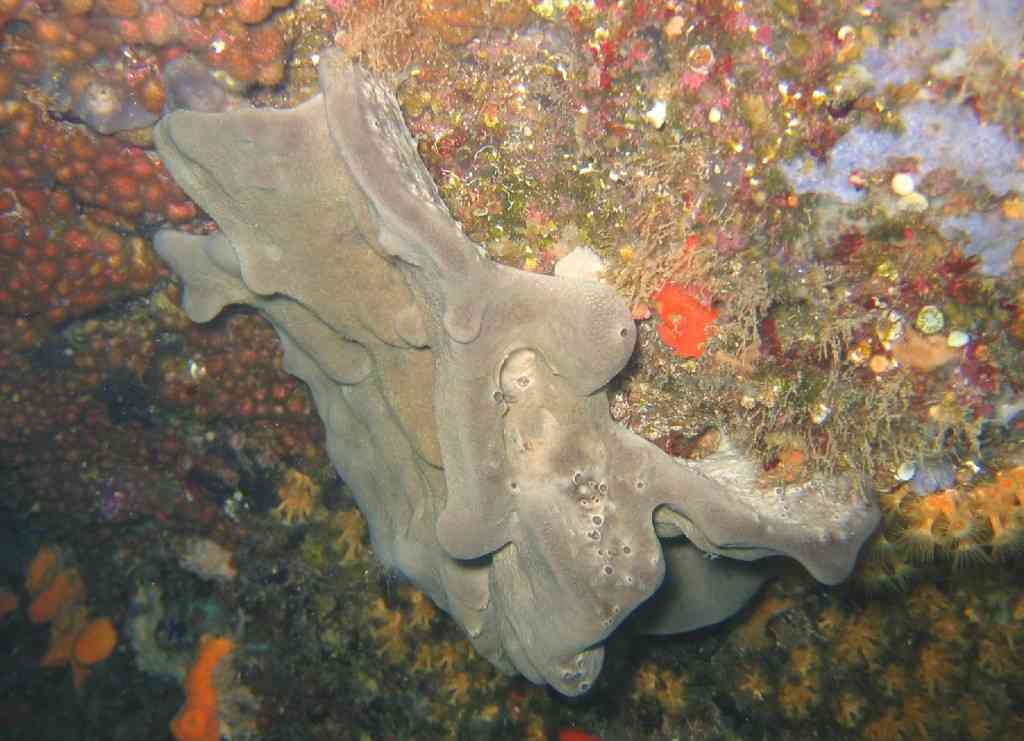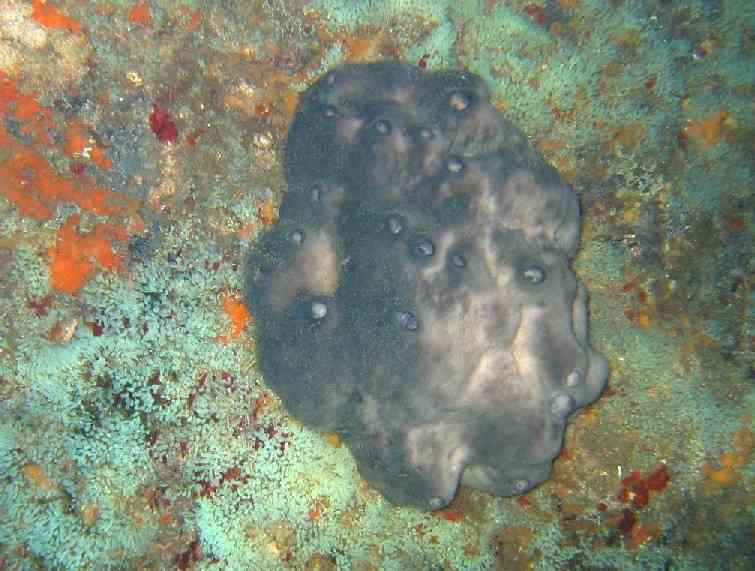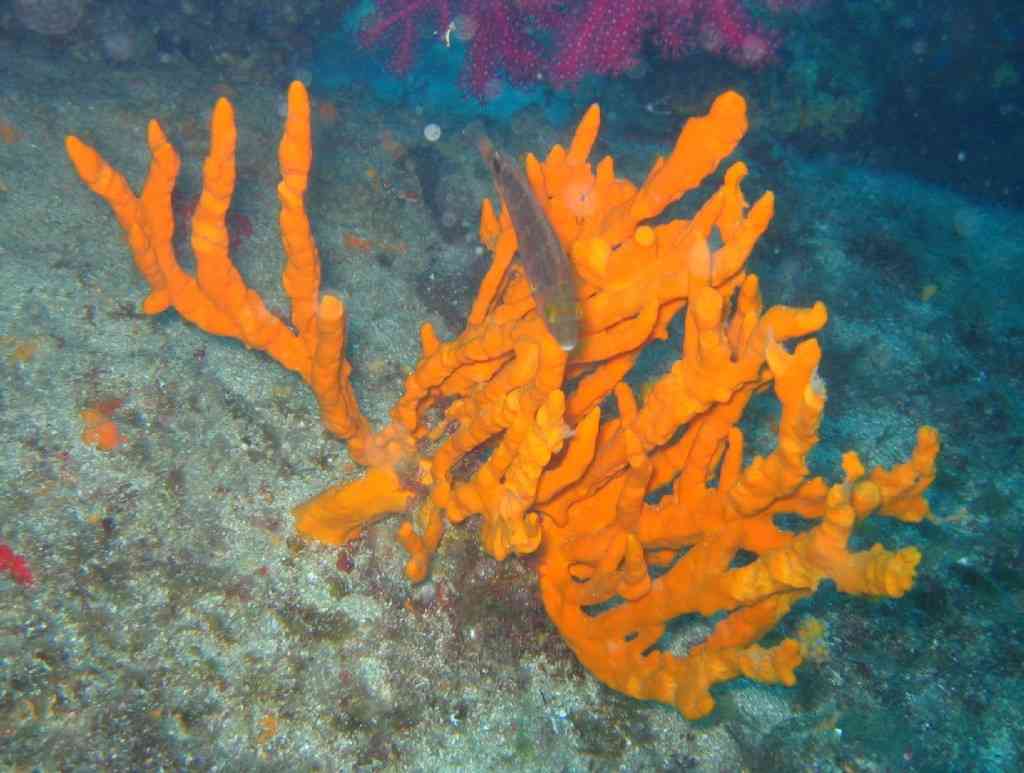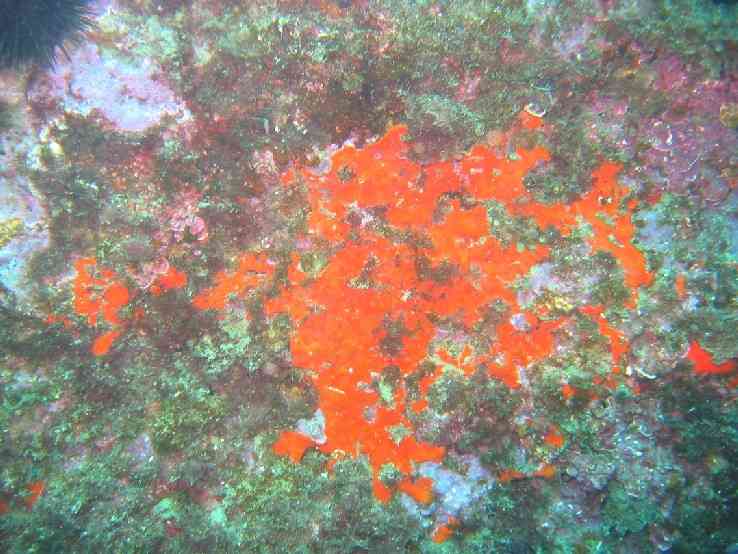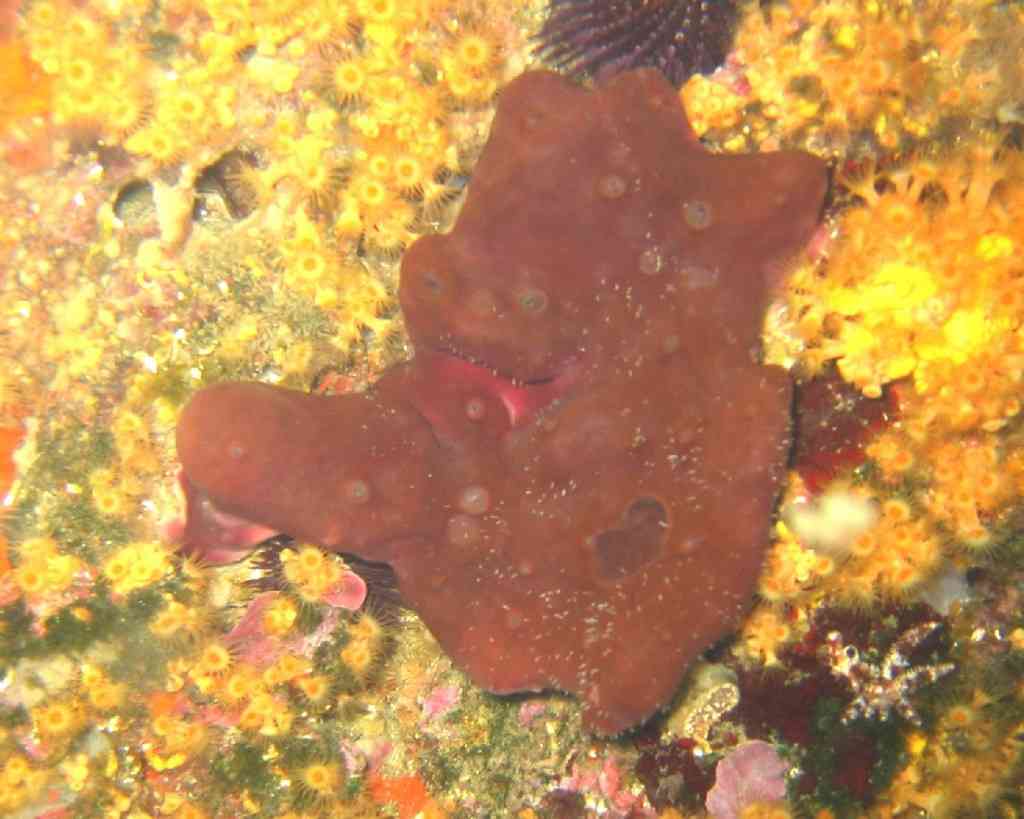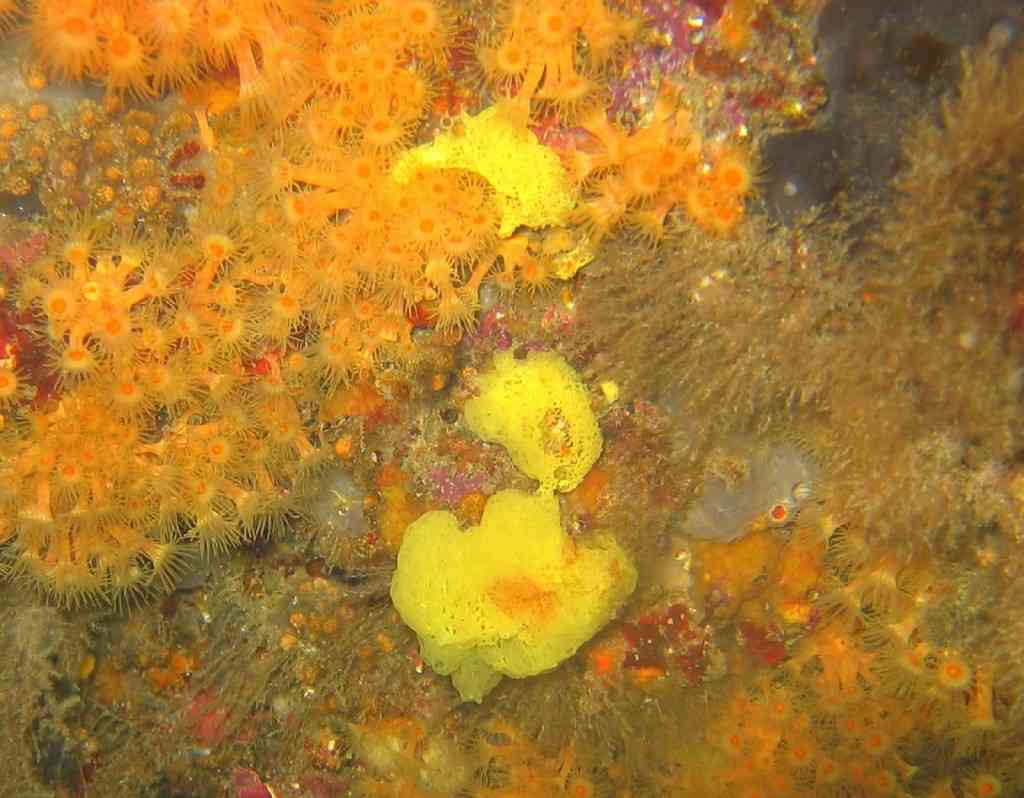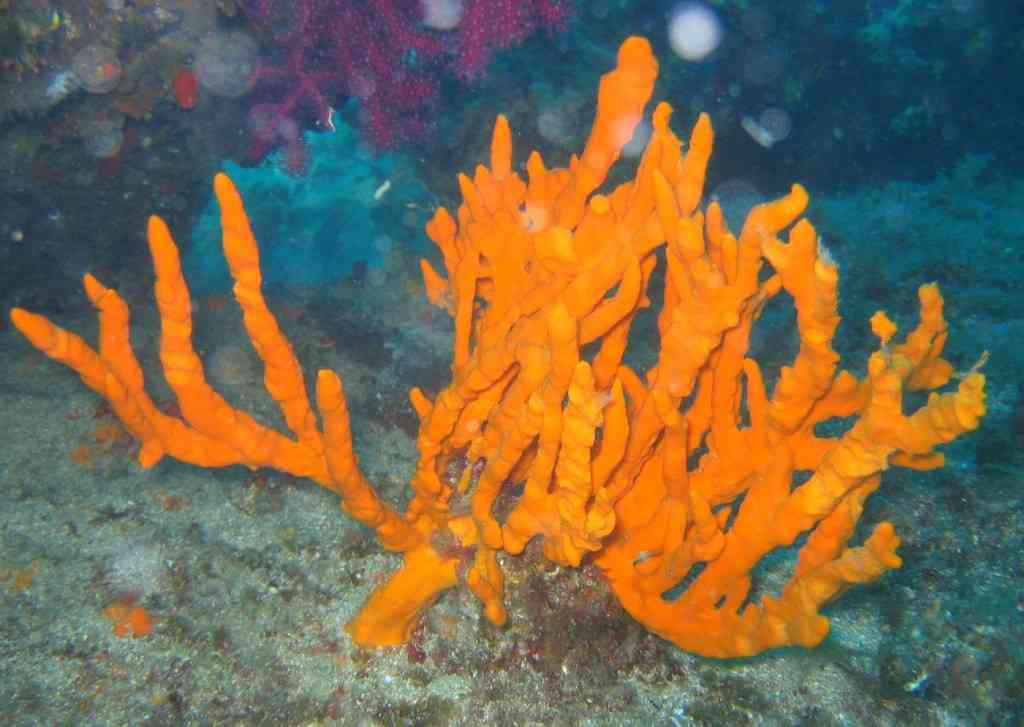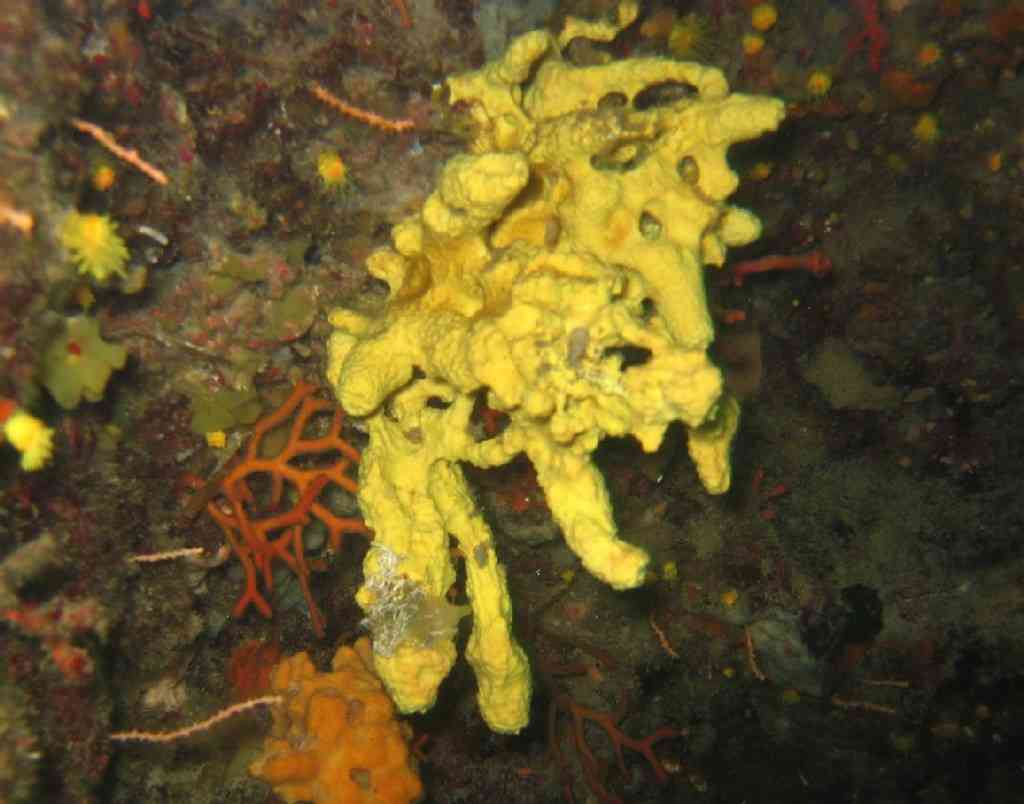Sponges
Number :
About 7 000 species, mostly marines.
DusaFinish :
Mass without head or body, no symmetry. Always attached to the substrate. There are many small holes (ostioles inhalants) sometimes invisible and some large holes of water outlet, the oscules.
The examination in the laboratory shows the presence of two layers of cells: the Pinacocytes (outward) and the choanocytes, of the cells flagellate with flange, inward.
WrittenÈRecognition Res :
Identification sometimes requires examination of spicules with Binocular Magnifier: This is not practical for the diver, in situ.
Easy Confusion with Synascidies (difference: No reaction to the touch because there is no nervous system in the sponge, and no muscle).
Diversityusa
Very variable forms: encrusting, tubular (goblet, Vase), branched, flowing, perforating or indistinct mass.
Variable colors: Blue, pink, grey, etc.
Maximum size: Neptune Cup, 2 m diameter!
Remarks :
The excellent plasticity of the sponges explains their shapes adapted to the turbulence of the waters. Both layers of cells are separated by the Mesoglea, which contains several types of mobile cells (spicules formation, sex).
Relations Trophic:
Continuous water filtering (clean volume pumped in less than one minute on average). The particles (micro algae, protozoa) are filtered in the vibration chambers and digested in Vacuoles (phagocytosis). Few species eat sponges, include slugs (characteristic traces of the Dalmatian Doris on Sponge stone, Mediterranean) and crab Dromie.
Reproduction :
calcareous sponges are gonochoriques (separate sexes) and hermaphroditic siliceous sponges. The sponges are viviparous: hair swimmers come out and do not wait to settle on a substrate (support) that they will no longer leave.
Great ease of budding and regeneration. External buds, example of sea Orange, internal budding: forms of resistance for survival in difficult conditions, gemmae.

